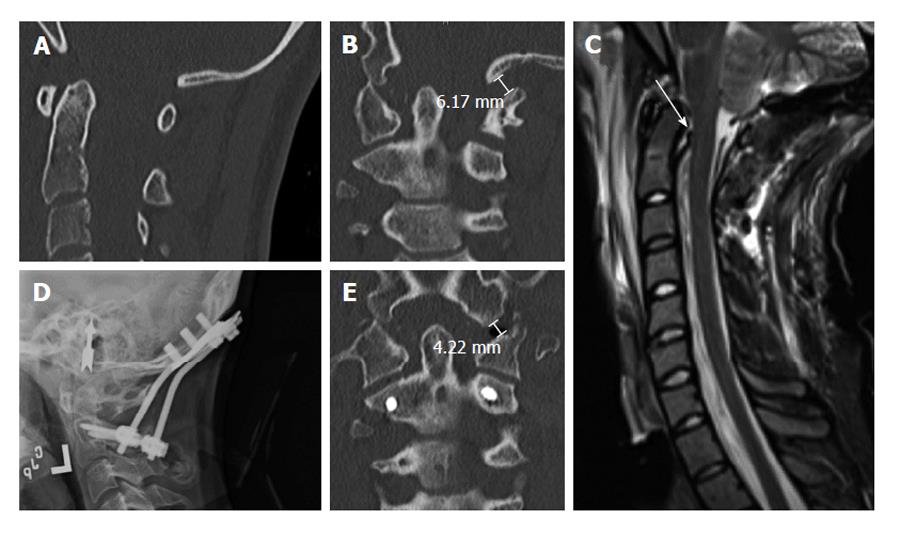Copyright
©The Author(s) 2015.
World J Orthop. Mar 18, 2015; 6(2): 236-243
Published online Mar 18, 2015. doi: 10.5312/wjo.v6.i2.236
Published online Mar 18, 2015. doi: 10.5312/wjo.v6.i2.236
Figure 4 Nineteen years old woman with traumatic atlanto-occipital dislocation following high-speed motor vehicle accident.
A and B: CT of the cervical spine demonstrates no significant abnormalities in the midsagittal plane (A), but clear asymmetry of the occipito-atlantal joints in the coronal plane (B). The left occipital condyle-C1 interval is increased, measuring 6 mm; C: MRI of the cervical spine (T2WI) reveals abnormal signal suggesting disruption of the cruciate ligament; D: Post-operative cervical radiographs show O-C2 fusion using bicortical occipital screws and C2 pedicle screws; E: Post-operative CT of the cervical spine demonstrates reduction of the left occipital condyle-C1 interval to 4 mm. CT: Computed tomography; MRI: Magnetic resonance imaging.
- Citation: Hall GC, Kinsman MJ, Nazar RG, Hruska RT, Mansfield KJ, Boakye M, Rahme R. Atlanto-occipital dislocation. World J Orthop 2015; 6(2): 236-243
- URL: https://www.wjgnet.com/2218-5836/full/v6/i2/236.htm
- DOI: https://dx.doi.org/10.5312/wjo.v6.i2.236









